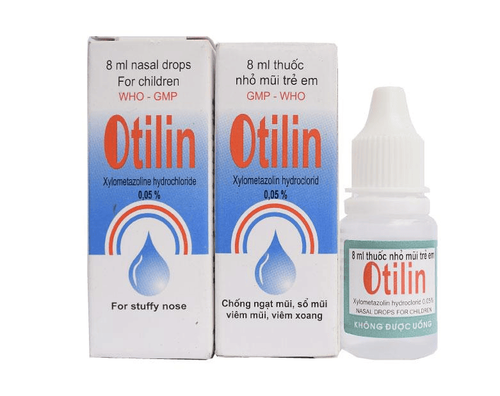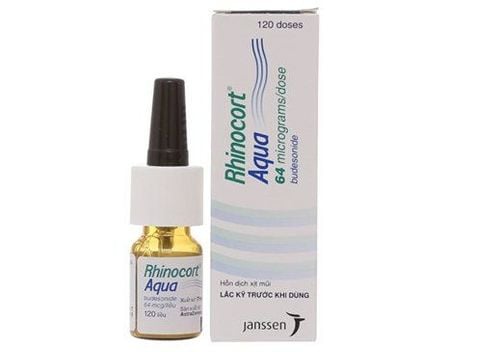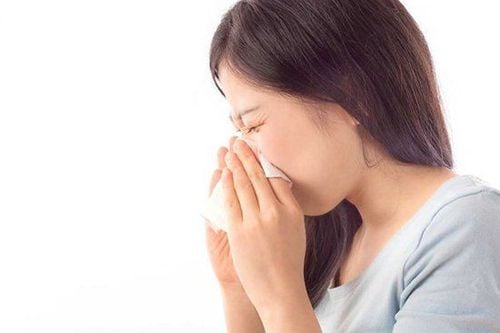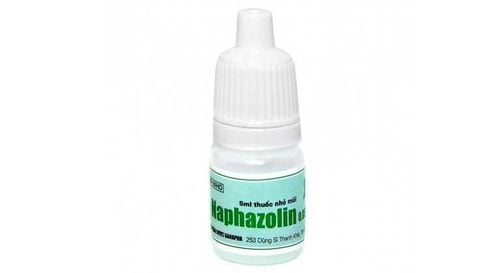This is an automatically translated article.
Trivacintana is a drug used in the treatment of a number of common medical conditions such as fever, headache, sneezing, runny nose,... To ensure safety and maximize treatment effectiveness , you need to take Trivacintana exactly as prescribed by your doctor/pharmacist
1. What is Trivacintana?
Trivacintana is a pain reliever, antipyretic drug, prepared in the form of film-coated tablets, with the main ingredients in each tablet being:
Paracetamol 650mg; Phenylephrin.HCl 5mg; Chlorpheniramine maleate 4mg. Paracetamol is a nonsteroidal antipyretic analgesic. This is the active metabolite of Phenacetin, an effective analgesic and antipyretic that can replace aspirin. However, unlike Aspirin, Paracetamol has no anti-inflammatory effect. Paracetamol has the same analgesic and antipyretic effects as aspirin in equal doses in grams.
With therapeutic doses, Paracetamol has little effect on the cardiovascular and respiratory systems, it does not change the acid - base balance, does not cause irritation, ulcers or stomach bleeding like Salicylates. Since Paracetamol has no effect on systemic cyclooxygenase, it acts only on central nervous system cyclooxygenase/prostaglandin. Paracetamol does not have the same effect on platelets or bleeding time as aspirin. Phenylephrine hydrochloride is an a1 (a1-adrenergic) sympathomimetic that acts directly on a1-adrenergic receptors to constrict blood vessels and increase blood pressure. The antihypertensive effect of phenylephrine is weaker than that of norepinephrine, but the duration of action is longer. At the same time, Phenylephrine hydrochloride also causes reflex bradycardia, reducing blood volume in the circulatory system, reducing blood flow through the kidneys, as well as reducing blood volume into many tissues and organs of the body.
At therapeutic doses, Phenylephrin has no stimulant effect on cardiac b-adrenergic receptors (b1-adrenergic receptors); but at high doses, this active substance stimulates b-adrenergic receptors. Phenylephrine does not stimulate bronchial b-adrenergic receptors or peripheral vessels (b2-adrenergic receptors). At therapeutic doses, this active substance has no effect on the central nervous system.
Chlorpheniramine is an antihistamine with very little sedative effect. As with most antihistamines, chlorpheniramine also has the side effect of blocking acetylcholine secretion, but this side effect varies widely between patients.
Chlorpheniramine's antihistamine effect is obtained through competitive blocking of H1 receptors of effector cells.
Trivacintana is indicated for symptomatic treatment in the following cases:
Colds and fevers; Headache ; Runny nose due to seasonal allergies; Runny nose; Sneezing; Stuffy nose ; Acute rhinitis. Trivacintana is contraindicated in the following cases:
People with hypersensitivity to any component of the drug or hypersensitivity to Pseudoephedrine; People with repeated anemia or kidney failure, liver failure, G6PD deficiency; Patients with severe heart disease, coronary artery disease, severe hypertension, narrow-angle glaucoma, severe hyperthyroidism, acute asthma attack, symptoms of prostate enlargement, bladder neck obstruction; Patients with gastric ulcer, pyloro-duodenal obstruction; The patient used an MAOI drug within 14 days; Pregnant and lactating women; Children under 15 years old.
2. Dosage and how to use Trivacintana
Trivacintana is to be taken orally with adequate amounts of water. The recommended dosage of Trivacintana for adults is as follows: 1 tablet each time, 2-3 times a day.
When symptoms of Trivacintana overdose occur, the physician should consider applying symptomatic treatment and medical supportive measures such as induction of vomiting, gastric lavage, and administration of specific antagonists, if available, immediately. ie.
3. Trivacintana side effects
During the use of Trivacintana, you may encounter some side effects of the drug, including:
Skin rash; Light sleep to deep sleep; Dry mouth; Dizzy ; Nausea; Causes irritation during intermittent treatment. If you experience any side effects of Trivacintana, tell your doctor immediately or go to the nearest medical facility for timely treatment.
4. Interactions with other drugs
Drugs that can interact with Trivacintana when used together include:
MAO; Ethanol; Sleep-inducing sedatives; Phenytoin; Carbamazepine; Isoniazid; Epinephrine; Bromocriptine; sympathomimetic drugs; Tricyclic antidepressants; Guanethidine; Atropine ; Ergot alkaloids; Digitalis; Furosemide ; Pilocarpine; Coumarine; Indandion derivatives; Phenothiazines.
5. Precautions when using Trivacintana
Avoid drinking alcohol when using drugs; Trivacintana should be used with caution in patients with pre-existing anemia, chronic lung disease, pulmonary embolism, shortness of breath, dyspnoea, myasthenia gravis, people over 60 years of age, patients with hyperthyroidism, bradycardia, blockade partial heart failure, diabetes, glaucoma, driving or operating machinery; Trivacintana increases the risk of urinary retention in patients with prostatic hypertrophy, urinary tract obstruction, pyloroduodenal obstruction; Patients at risk or with respiratory and hepatic impairment; When you take Trivacintana, there is a risk of dry mouth, an increased risk of tooth decay. Therefore, you need to keep your teeth clean while taking this medicine; Do not share Trivacintana snails with other drugs containing Paracetamol, Phenylephrin or Chlorpheniramine. Above is information about uses, dosage and precautions when using Trivacintana. To ensure safety for your health and maximize the effectiveness of your treatment, you need to take Trivacintana exactly as directed by your doctor.
Please dial HOTLINE for more information or register for an appointment HERE. Download MyVinmec app to make appointments faster and to manage your bookings easily.













